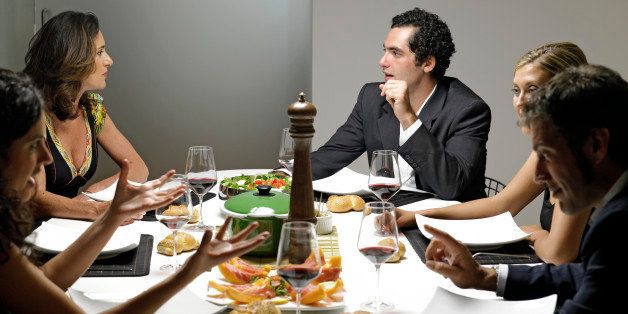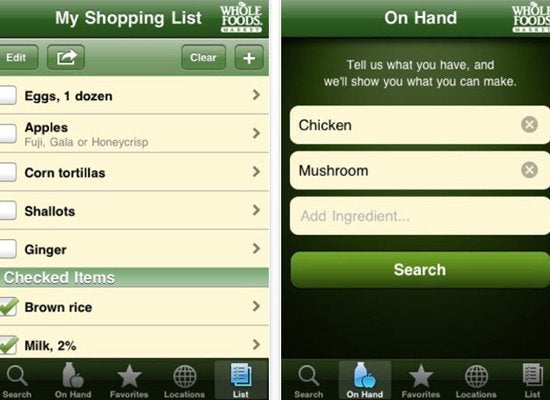
Would you break bread with strangers? Some apps are betting (and hoping) that you will.
The relationship between food and social interaction is not exactly a novel concept -- from dinner parties, to a widespread fear of eating out alone, to memories of sharing a kitchen with other family members, there is something to be said for food's ability to bring people together. But with our increasing dependence on and obsession with technology (and specifically, various devices), the things that have traditionally brought us together are at risk of wielding less influence over our daily interactions.
But while many technological advancements have received flak for making us more isolated and less social, there are apps that have tried to bridge the gap between technology and interpersonal relationships -- many of which have chosen to do this through food.
Apps such as Grouper, Grubwithus, LeftoverSwap, EatWith, and HomeDine all use technology to encourage strangers to eat (or in the case of Grouper, drink) together. Grubwithus offers organized dinner parties at restaurants in various cities, where individuals or groups of friends can sign up to eat with others that share similar interests (essentially Meetups over meals). Grouper, which has a more blind-datey atmosphere, sets up two groups of friends (three of each) to have drinks together. EatWith, an Israeli-based startup, focuses a bit more on travelers in foreign countries -- individuals can sign up for brunch, lunch, and dinner parties with local families when away from home. HomeDine has a similar platform, but is less travel-focused than EatWith; HomeDine pairs individuals who like attending dinner parties with home cooks who enjoy throwing them. LeftoverSwap is perhaps the most unique platform out there -- this particular app is hoping that strangers are interested in eating each other's leftover food.
But would you actually do any of these things? While food is clearly something with the power to bring people together, the people in question are not usually complete strangers. Though Grouper has enjoyed a significant amount of popularity, many of the other apps have not faced a similar reception. The success of Grouper compared to other social dining apps is most likely based on two factors: the dating-esque platform and the fact that you have two friends to endure the awkwardness with you. Does this suggest that people are only willing to eat with strangers if there is a possibility of a relationship out of it? Or if you are not thrown to the wolves on your own?
Maybe. But either way, it does suggest that most people are not quite extroverted enough to be willing to share a dinner with complete strangers. However, the emergence of such apps are important in understanding the relationship between technology, social interaction, and dining. Though some of the existing apps may have been overambitious in their understanding of this relationship, the success of Grouper definitely suggests that there is a market for similar apps. And for food-lovers like me who (call me old-fashioned) prefer face-to-face interaction over communicating via robot, it gives us hope that we can live in harmony with technology, instead of being overtaken by it.
